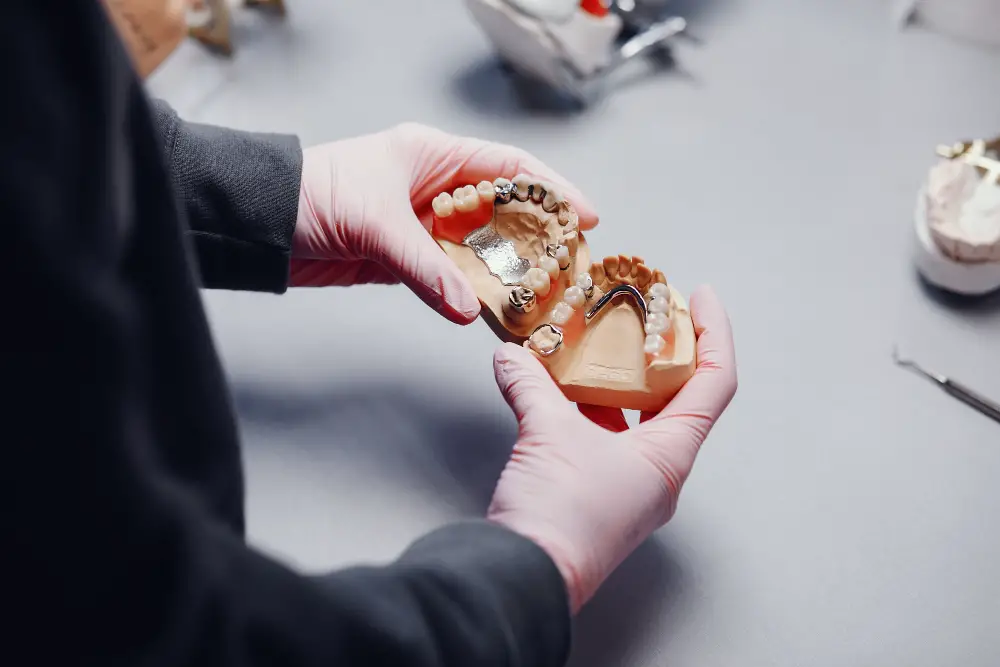Amalgam fillings, also known as silver fillings are made from a mixture of metals, including mercury. Composite fillings are made from a tooth-colored resin material that bonds directly to the tooth.
TL;DR Amalgam fillings Vs. Composite fillings
Amalgam fillings are made of a mixture of metals, are durable, less expensive, and can last around 10-15 years. They are silver-gray in color and require more extensive tooth preparation. Composite fillings are tooth-colored, less durable, more expensive, and can last around 5-10 years. They require less tooth preparation and offer better aesthetics. The choice depends on factors like durability, cost, aesthetics, and dentist recommendation.
What are amalgam fillings?

Amalgam fillings, also known as silver fillings, have been around for over a century and are one of the most traditional options available. These fillings consist of a mixture of metals, including mercury, silver, tin, and copper. The combination creates a durable and long-lasting filling that can withstand the rigors of daily chewing.
Amalgam fillings continue to be an effective choice for restoring decayed teeth due to their durability and affordability factor. However, if aesthetics play a crucial role in your decision-making process or if you have specific concerns about metal content in your mouth, there are alternative options like composite resin worth exploring with your dentist.
What are composite fillings?
Composite fillings, also known as tooth-colored or white fillings, are a type of dental filling material used to repair teeth that have been affected by cavities or other forms of damage. Unlike amalgam fillings, composite fillings are made from a mixture of ceramic and plastic compounds, which gives them their natural appearance.
Composite fillings offer both cosmetic benefits and functional strength while maintaining a natural appearance in your smile. Consulting with your dentist will help determine if these types of restorations are suitable for your specific dental needs.
Amalgam fillings Vs. Composite fillings – Key differences
| Aspect | Amalgam Fillings | Composite Fillings |
|---|---|---|
| Material Composition | A mixture of metals, including silver, mercury, tin, and copper. | A mixture of acrylic resin and powdered glass or ceramic. |
| Appearance | Silver-gray in color. | Tooth-colored, can be matched to the natural tooth shade. |
| Durability | Highly durable and long-lasting. | Less durable compared to amalgam, more prone to wear and staining. |
| Tooth Preparation | Requires more extensive tooth preparation, removal of healthy tooth structure to create space for filling. | Minimal tooth preparation, preserving more of the natural tooth structure. |
| Sensitivity to Moisture | Less sensitive, can be placed in a moist environment. | Sensitive to moisture, requires a dry environment for proper placement. |
| Expansion and Contraction | Resistant to expansion and contraction due to temperature changes. | More prone to expand and contract, may cause leakage over time. |
| Allergic Reactions | Very rare, but some individuals may have allergic reactions to the metal components. | Allergies are extremely rare since composite fillings are metal-free. |
| Aesthetics | More noticeable due to the silver-gray color. | Blend seamlessly with the natural tooth color, providing better aesthetics. |
| Cost | Relatively less expensive. | Generally more expensive than amalgam fillings. |
| Application Time | Requires less time for placement. | Requires more time for precise layering and curing. |
Amalgam fillings Vs. Composite fillings – How long do they last?
The longevity of amalgam fillings and composite fillings can vary based on several factors, including oral hygiene, biting forces, location in the mouth, and individual habits. However, here are some general guidelines regarding their lifespan:
Amalgam Fillings:
- Amalgam fillings are known for their durability and long-lasting nature.
- On average, they can last for 10 to 15 years or even longer with proper care.
- With time, amalgam fillings may show signs of wear, corrosion, or leakage, which may require replacement.
Composite Fillings:
- Composite fillings are not as durable as amalgam fillings but can still provide good longevity.
- They typically last for 5 to 10 years, depending on the factors mentioned earlier.
- Composite fillings may wear down or chip over time, necessitating repairs or replacement.
It’s important to note that these are general estimates, and individual experiences may vary. Regular dental check-ups and proper oral hygiene practices, such as brushing, flossing, and maintaining a balanced diet, can help extend the lifespan of both types of fillings. Ultimately, consulting with a dental professional is crucial to assess the condition of existing fillings and determine the best course of action for your specific situation.
Amalgam fillings Vs. Composite fillings- How much do they cost?
The cost of amalgam fillings and composite fillings can vary depending on factors such as the location, the dentist’s fees, the size of the filling, and the region where you receive dental treatment. However, here are some general considerations regarding their costs:
Amalgam Fillings:
- Amalgam fillings are typically less expensive than composite fillings.
- The cost of an amalgam filling can range from $50 to $150 per tooth, on average.
- Insurance coverage may partially or fully cover the cost of amalgam fillings, reducing out-of-pocket expenses.
Composite Fillings:
- Composite fillings tend to be more expensive than amalgam fillings.
- The cost of a composite filling can range from $90 to $250 per tooth, on average.
- Composite fillings are considered cosmetic in nature, and insurance coverage may vary. Some dental insurance plans may cover composite fillings up to the cost of an amalgam filling, with the patient paying the difference.
It’s important to keep in mind that these are general cost ranges and can vary significantly depending on various factors. It is advisable to consult with your dentist and inquire about specific pricing and insurance coverage related to fillings at your particular dental practice.
Amalgam fillings Vs. Composite fillings – Which is better?
The choice between amalgam fillings and composite fillings depends on several factors, including personal preferences, the location of the filling, aesthetic concerns, and the dentist’s recommendation. Here are some considerations regarding each type:
Amalgam Fillings:
- Durability: Amalgam fillings are known for their strength and longevity, making them suitable for areas with high chewing forces, such as molars.
- Cost: Amalgam fillings are generally less expensive than composite fillings.
- Placement: Amalgam fillings require more extensive tooth preparation and removal of healthy tooth structure to create space for the filling.
- Aesthetics: Amalgam fillings are silver-gray in color, which can be more noticeable compared to tooth-colored alternatives.
- Allergic Reactions: While extremely rare, some individuals may have allergies to the metals used in amalgam fillings.
Composite Fillings:
- Aesthetics: Composite fillings are tooth-colored and can blend seamlessly with natural tooth color, making them a popular choice for visible teeth.
- Tooth Preservation: Composite fillings require less tooth preparation, preserving more of the natural tooth structure.
- Sensitivity to Moisture: Composite fillings are sensitive to moisture and require a dry environment during placement.
- Repairability: Composite fillings can be repaired if damaged, whereas amalgam fillings may require complete replacement.
- Cost: Composite fillings are generally more expensive than amalgam fillings.
Ultimately, the decision on which filling material is better for you depends on your specific needs and the recommendation of your dentist. It’s important to consult with a dental professional who can evaluate your dental health, consider your preferences, and provide personalized advice on the most suitable option for your situation.
Image Credits
Featured Image By – Rochak Shukla Freepik
Image 1 By – prostooleh Freepik








